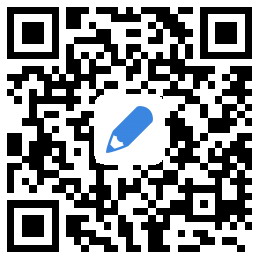解讀葡萄酒瓶上的標簽
Say you're in the wine store and you want to buy something new. You have nothing to go by outside of the label. Will the label tell you anything you should know? There are a million caveats and exceptions, but here's some general advice: 假設你在葡萄酒店里想買沒嘗試過的酒,除了酒瓶上的標簽,你沒有其它信息可供參考。那么標簽上的信息會給你些指點嗎?盡管關于買酒的忠告和例外情況不計其數,但下面是一些普遍性的建議:
Vintage. This is actually the first thing we look for ourselves. You don't need to have a vintage chart in your pocket or care whether 2001 or 2002 was a better year in the Sierra Foothills. The vast majority of wines at the store are meant to be drunk right away, so you want to make sure the wine isn't too old, particularly if you're buying it expecting lively, fresh fruitiness. We routinely see five-year-old Pinot Grigio and two-year-old Beaujolais Nouveau at stores, for example, so as soon as we see that kind of age on wines like those, we know we can skip them and move on (and possibly not shop there again).
葡萄酒年份 - 這實際上是我們要尋找的首要事情。您無需在口袋里放上一張葡萄酒年份表,或弄清楚到底是2001年還是2002年的在Sierra Foothills生長的葡萄更好。葡萄酒專賣店里的絕大多數葡萄酒是準備被立刻喝掉的,所以你要確保該酒還未存放過久,尤其是如果你是沖著那種充滿活力的清新果香味而去的話。舉例來說,我們經常在葡萄酒店里看到5年陳的比諾格里喬(Pinot Grigio)和2年陳的薄酒萊新酒(Beaujolais Nouveau)。每當我們看到這樣酒齡標在這類的葡萄酒上,我們就知道可以走人了(也許不會再踏進這家店里)。
Alcohol content. Too many wines today have too much alcohol, which leaves them unbalanced. Sure, there are some classic wines with fairly high alcohol levels, but many of today's regular table wines - Merlot, Chardonnay, Shiraz, Zinfandel - have levels at 15% or above. Some of those might be terrific, but if we had nothing else to go on, we'd look for alcohol content at about 14% and below.
酒精含量 - 如今太多的酒其酒精含量太高,這使得這些酒失去了平衡。當然,有一些經典葡萄酒其酒精含量確是相當高的,但今天許多的例行佐餐酒,如美樂(Merlot),霞多麗(Chardonnay),設拉子(Shiraz),增芳德(Zinfandel),酒精含量都在15%或以上。其中一些可能是很棒,但若是沒有其它判斷標準可供參考,我們還是會找酒精含量約為14%以下的葡萄酒。
Critter labels. In the past few years, there has been a profusion of inexpensive wines with cute animals on the labels. We have tasted these wines and they are generally less attractive than the labels. Of course, some good wines happen to have animals on the labels - consider Stag's Leap or Iron Horse from California, for instance - but, especially when it comes to less-expensive wines, we'd avoid wines where the cute animal seems to be the main point of the wine. A humdinger of a tale about the animal is often a clue that this is a wine to avoid.
標簽上的動物圖案 - 在過去幾年中,那些標有可愛動物的廉價葡萄酒大有泛濫之勢。品嘗了這些酒之后,我們發現其味道普遍沒有標簽那么有吸引力。當然,有些好酒恰恰是在其標簽上印有動物圖案的。例如,加州產的鹿躍酒(Stag's Leap)或鐵馬酒(Iron Horse)- 但是,說起不那么昂貴的葡萄酒時,我們最好還是別買那些似乎把動物圖案作為主要賣點的葡萄酒。對動物的大肆渲染,往往是提示我們不要買這樣的酒。
Geography. The more specific the better. A wine that says it's from Napa is probably a better bet than a wine that simply says it's from California. It's the same way all over the world. Unfortunately, this will also probably be reflected in the price, so this might not tell you much about value. There are fabled vineyards around the world, plots of land famous for producing high-quality grapes. If you care enough to know a few of these, they might help you make an educated guess about quality.
產地- 這方面的說明越具體越好。標明產自納帕谷(Napa)的葡萄酒相對于籠統地標有產自加利福尼亞州的酒,前者可能是個更可靠的選擇。這一點全世界無一例外。可惜的是,這點便利在價格上也會體現出來,因此在性價比上這或許幫不了你太多忙。目前世界各地有些傳說中的著名葡萄園和能生長出高品質葡萄的地塊,如果你能留心記住幾個,那可能會有助你對酒質作出較有把握的猜測。
Estate-bottled. This means the people who made the wine also had a hand in growing the grapes on their own land. We generally find this a good sign.
葡萄園內裝瓶 - 這意味著釀酒人也親自動手在他自家地里種植葡萄。通常我們認為這是個好事。
Reserve. On American wines, this doesn't mean anything, so ignore it. There are various rules around the world concerning words like Reserva, but there's no guarantee it means anything in other parts of the world. Unless you know something about the rules concerning, say, Rioja, where it has genuine significance, don't worry about it.
莊園精選 - 對美國葡萄酒而言,這種說法根本什么都沒說,因此不妨忽略它。全世界有無數針對莊園精選的規矩,但誰也不能保證這些規矩在世界其它地區有什么意義。除非你懂些某些地區關于莊園精選的規定,例如,在西班牙里奧哈葡萄酒產地(Rioja),那里有真正意義上的區別,否則就不要在這方面費心了。
Old vines or vieilles vignes. Theoretically, older vines produce fewer, but more flavorful, grapes, but the problem is that no one has defined what an 'old vine' is, so anyone can put this on the label. Again, ignore it.
老葡萄樹 - 理論上來說,老樹的產量較少,但結的葡萄更可口。但問題是,沒人曾為“老樹”做過明確的定義,所以任何人都可以在標簽上這樣標明。所以,也別花心思在這上面。
A phone number. This will require some extra time, because we're talking about tiny type on the back of a label, but you'd be surprised how many small-production wines these days include a phone number on the back and an invitation to call the winery. We have found that this is a sign of a highly personal winery. We have called those numbers many times over the years and it's amazing how often the winemaker or winery owner answers the phone.
電話號碼 - 這要你多花點時間,因為我們指的是酒瓶背面標簽上的小字。但你會驚奇地發現,如今許多的小產量葡萄酒在瓶標簽上印有電話號碼并歡迎買主給酒莊去電。我們發現,這標志著這些酒莊極有個性。若干年來我們曾多次打過這些號碼,釀酒師或酒莊老板親自接電話的概率高得驚人。
Details, details, details. When we were young, we were fond of the late Hanns Kornell's Sehr Trocken, one of a handful of sparkling wines he made at his California winery. On the back label was a hand-printed date of when the wine was 'disgorged,' when the sediment in the neck of a bottle of bubbly was removed and the temporary cap replaced by a real cork. On the front of each bottle was this notation: 'Naturally fermented in this bottle,' which was a big deal because that's the way real Champagne is made, with the bubbly fermentation taking place in the bottle and not in a huge tank. We love information like that and some wineries still give it, including the dates when the grapes were harvested and the wine bottled. Details like these make the point that these things mattered to the winemaker and that he or she understands that they have meaning for the consumer, too. They add to the feeling of the wine's authenticity.
細節,細節,還是細節 - 我們年輕時,喜歡已故的漢斯?科內爾(Hanns Kornell)的Sehr Trocken酒,這是在他加州的酒莊釀制的一種起泡酒。標簽背面是手寫的日期,標明酒是何時“酵母溶解”的、香檳酒的瓶頸處的沉淀物是何時被去除的以及真正的軟木塞是何時替代了臨時瓶蓋。每個酒瓶正面那張標簽還加上這段話:“酒在此瓶中自然發酵”,可別小看這個,因為這才是真正的釀制香檳的方法,即酒在瓶中而不是在巨大的桶里發酵。我們喜歡諸如此類的信息,而一些酒廠至今仍會標上這些細節,包括葡萄收獲和葡萄酒裝瓶的日期。諸如此類的細節說明了釀酒師很在意這些信息,他或她明白這些細節對買家也是有意義的。它們增加了酒的正宗感。
本文地址:http://www.hengchuai.cn/writing/essay/99153.html




